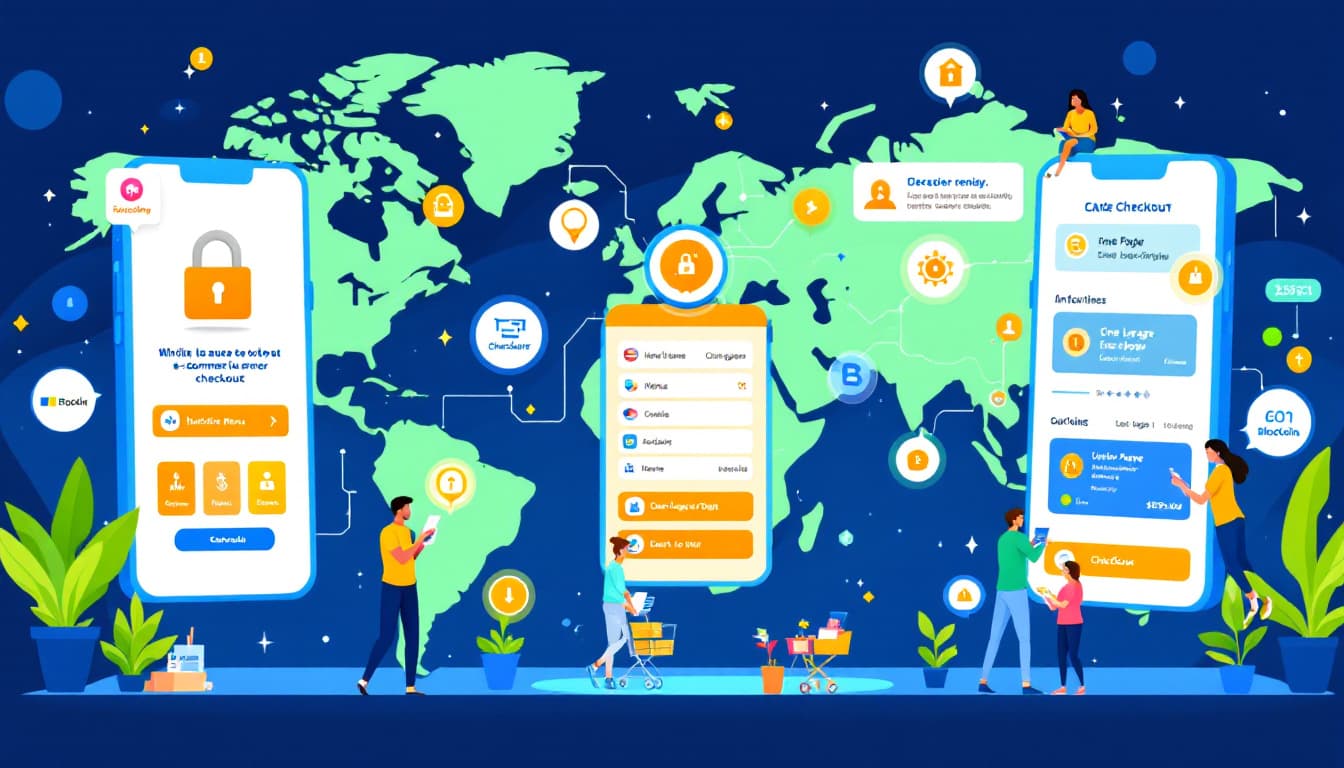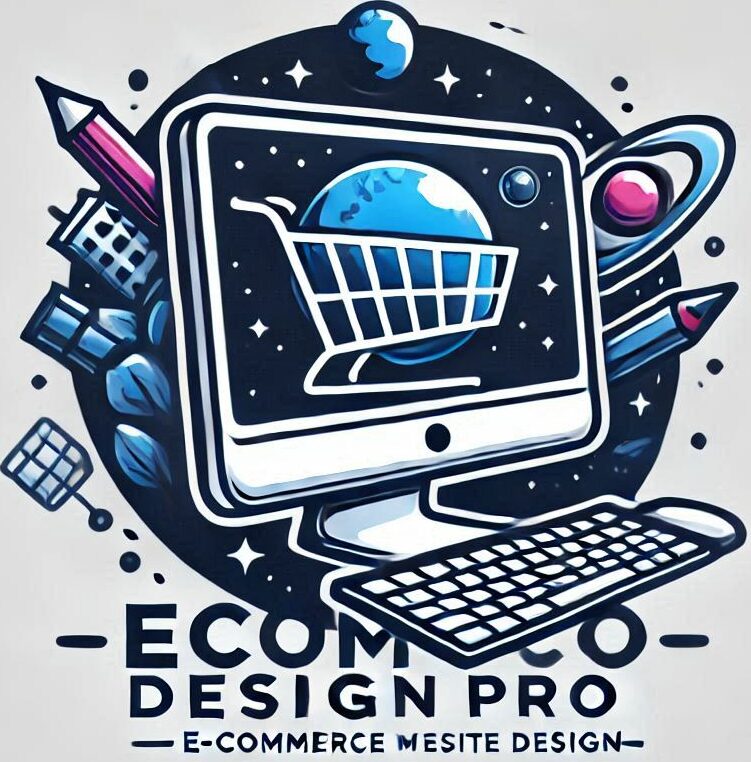
Global e-commerce design strategies help you win outside your home market. With online sales projected to hit roughly $6.4 trillion in 2025, the stakes are high for stores that want worldwide reach. The right design choices make your site clear, fast, and trustworthy for buyers in any country.
The challenge is simple. Shoppers in different regions expect different languages, payment options, and layouts. Colors, imagery, and product info also carry local meaning. Ignore these cues, and you add friction that hurts conversions.
This post breaks down what works. You will learn how to size up audiences by country and device, pick patterns that feel familiar across markets, and keep speed and accessibility tight. We will cover content localization, currency and tax clarity, mobile-first UX, and privacy cues that build confidence.
We will also look at practical moves you can ship fast. That includes language toggles with auto-detect, clear size guides, local payment stacks, and trust marks that match buyer expectations. For visual choices across cultures, see this guide on Adapting Layouts to Cultural Preferences in E-Commerce.
Follow along to build a store that feels local everywhere. Done right, these strategies cut bounce rates, raise conversion, and grow customer trust that lasts.
Know Your Global Customers to Build Trust and Drive Sales
 Image created with AI
Image created with AI
Global e-commerce design strategies work when your store feels local to every visitor. Start with real user data, then shape language, layout, payment, and content to match how people buy in each region. Use analytics, heatmaps, and short surveys to spot friction. Local testing with 5 to 10 shoppers per market will reveal what to fix first.
Localize Content and Design for Different Cultures
Localization goes beyond translation. You are adapting meaning, tone, visuals, and money matters to fit the culture.
- Translate for clarity: Use native linguists, not raw machine output. Keep product names, size guides, care instructions, and return policies in plain, local language. A style guide for tone and keywords keeps voice consistent.
- Adapt visuals and color: Colors signal emotion. For example, avoid heavy use of red in some Asian markets where it can signal warnings or debt, and note that white can represent mourning in parts of East Asia. Swap images to reflect local people, homes, and seasons. Show foods, apparel, or holidays that match the region.
- Local currencies and units: Display prices in local currency by default, with tax and fees clear at checkout. Convert units, sizes, and dates. Use locale-aware formatting, like commas and periods in prices.
- Respect shopping norms: Offer regional payment methods and delivery windows. Feature local trust badges and return windows that match expectations.
Strong localization reduces bounce and lifts conversion because shoppers feel understood. For a practical checklist on research, visuals, and currency setup, see this guide on best practices in ecommerce localization.
Make Your Site Accessible to Everyone Worldwide
Accessibility expands your market and improves UX for all users. It also reduces legal risk and supports better SEO.
- Alt text and media: Write concise alt text that describes purpose, not just objects. Add captions and transcripts for video.
- Screen reader support: Use semantic headings, labels, and ARIA only when needed. Make form errors clear and placed near inputs.
- Keyboard access: Every function should work with a keyboard. Provide a visible focus state and skip-to-content link.
- Contrast and size: Meet color contrast targets and allow text resizing without breaking layout. Avoid image-only text.
- Standards: Aim for WCAG 2.1 AA as your baseline. Review the official guidelines at the W3C’s WCAG 2.1.
Result: a faster, clearer site that welcomes people with disabilities, older users, low-vision shoppers, and anyone on low bandwidth. Accessible design supports trust, reach, and conversions across markets.
Adopt 2025 Design Trends to Create Engaging Global Experiences
Global e-commerce design strategies in 2025 focus on speed, clarity, and confidence. Mobile-first layouts, AI and AR that guide choices, and rich video tied to omnichannel journeys help your store feel familiar in any country. Use the trends below to reduce friction and boost cross-border conversions.
 Image created with AI
Image created with AI
Prioritize Mobile-First Design for On-the-Go Shoppers Everywhere
Mobile is the default in 2025. Industry data shows mobile commerce revenue around the multi-trillion mark, with a large share of retail eCommerce happening on phones worldwide. See the market outlook in Statista’s overview of mobile commerce worldwide.
Design for fast taps and quick decisions:
- Fast-loading pages: Aim for sub-2.5s LCP, compress images, lazy-load below-the-fold media, and use a global CDN.
- Touch-friendly navigation: Large tap targets, sticky add-to-cart, bottom nav bars, and simple filters that expand vertically.
- Responsive layouts: Prioritize product info, price, reviews, and key CTAs above the fold. Hide extras behind accordions.
Test like a global shopper:
- Throttle to 3G and 4G profiles, and test on low-end Android devices.
- Simulate regional CDNs and cache cold starts.
- Track tap heatmaps and rage clicks by country to spot friction fast.
Use AI and AR to Personalize and Visualize Products Globally
AI lifts relevance for each market. Feed models with location, inventory, and past behavior to deliver country-aware recommendations, smart bundles, and dynamic content. For a broad snapshot of where AI and AR sit in 2025, see BigCommerce’s guide to top ecommerce trends.
AR builds buyer confidence across borders:
- Virtual try-ons for apparel, eyewear, and beauty reduce sizing doubts and returns.
- 3D product viewers show scale and fit in real spaces.
Quick ways to start:
- Use AI recommendation APIs with guardrails for stock and local pricing.
- Add AR through WebAR or 3D viewers so shoppers do not need an app.
- Measure success with add-to-cart rate, return rate, and time to decision.
Incorporate Videos and Omnichannel Features for Seamless Shopping
Short product videos close the gap between browsing and buying. Show use cases, size on model, and key features in under 30 seconds. Add captions, thumbnails that load fast, and autoplay without sound.
Tie channels together so shoppers can switch devices without losing progress:
- Persistent carts and wishlists across web, app, and social.
- Deep links from emails and social posts to the exact product or variant.
- Order tracking and support synced in one profile.
Result: consistent journeys that boost loyalty, even when buyers move from Instagram to your app to desktop checkout.
Boost Security and Usability to Retain Customers from Around the World
 Image created with AI
Image created with AI
Fast, clear flows convert. Safe, transparent systems keep buyers coming back. Use Global e-commerce design strategies that remove friction for every country, then reinforce trust at each step of the journey.
Streamline Navigation and Checkout for Quick Global Purchases
Make it easy to start, find, and finish a purchase, even on slow networks or older phones.
- Intuitive menus: Keep top-level categories short, with plain labels like “Men,” “Women,” “Kids,” and “Sale.” Add a predictive search bar, recent views, and location-aware results.
- One-page checkout: Combine shipping, billing, and payment on a single screen. Offer guest checkout, auto-fill addresses, and save details for next time. Fewer steps cut cart abandonment.
- Multi-language support: Auto-detect locale, then let users switch language and currency in the header. Translate error states, size guides, and returns. Use locale-aware date, time, and price formats.
- Time zones and tech access: Show delivery windows in a shopper’s local time. Defer heavy scripts, compress media, and cache aggressively so buyers on 3G can still check out. Offer email pay links for customers who cannot finish on-device.
Quick wins:
- Put express pay buttons first (Shop Pay, Apple Pay, Google Pay).
- Pre-check shipping method and auto-apply the best option.
- Show total cost early, with duties and taxes included.
For a broader view on 2025 UX priorities, see BigCommerce’s take on top ecommerce trends.
Enhance Security with Modern Tools to Build Worldwide Confidence
Security should be felt, not forced. Start with SSL/TLS on every page, strict HTTPS, and HSTS. Use tokenized payments and fraud tools that score risk in real time. Add biometric or passkey login for accounts where possible.
- Blockchain for payments: Consider blockchain-backed rails or crypto gateways where adoption is high. Immutable records and smart contracts add transparency across borders.
- Data privacy laws: Honor GDPR and similar laws with clear consent, a privacy dashboard, and simple data deletion. Minimize data collection, and set short retention windows.
- Trust signals: Display security badges, payment logos, and clear refund policies near the pay button. Send real-time order confirmations and shipping updates.
Strong security reduces refunds and chargebacks, and it increases repeat buys. Salesforce also highlights how privacy and identity tools are shaping 2025 commerce, reinforcing why trust drives retention. See their roundup of ecommerce trends to know in 2025.
Conclusion
Winning worldwide comes down to three moves done well: know your audiences, apply the right 2025 trends, and make security visible at every step. When you tailor language, visuals, payments, and units to each market, shoppers feel at home and buy with confidence. When you ship mobile-first speed, smart recommendations, AR where it helps, and short product videos, you remove guesswork. When you add clear pricing, one-page checkout, and strong privacy and fraud controls, you build trust that lasts.
Take the next step today. Run a quick audit of your store’s speed, localization, and checkout, then prioritize fixes that cut friction fast. If you want a second set of eyes, bring in experts to review your flows and metrics. Global e-commerce design strategies turn cross-border interest into repeat buyers, and they start with the changes you make this week.


